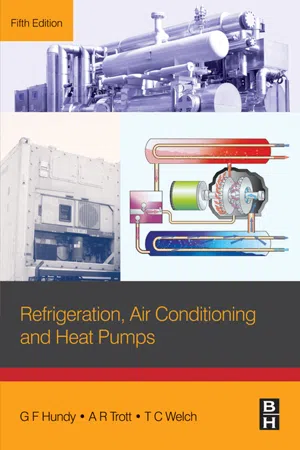
Refrigeration, Air Conditioning and Heat Pumps
G F Hundy
- 510 Seiten
- English
- ePUB (handyfreundlich)
- Über iOS und Android verfügbar
Refrigeration, Air Conditioning and Heat Pumps
G F Hundy
Über dieses Buch
Refrigeration, Air Conditioning and Heat Pumps, Fifth Edition, provides a comprehensive introduction to the principles and practice of refrigeration. Clear and comprehensive, it is suitable for both trainee and professional HVAC engineers, with a straightforward approach that also helps inexperienced readers gain a comprehensive introduction to the fundamentals of the technology. With its concise style and broad scope, the book covers most of the equipment and applications professionals will encounter. The simplicity of the descriptions helps users understand, specify, commission, use, and maintain these systems.
It is a must-have text for anyone who needs thorough, foundational information on refrigeration and air conditioning, but without textbook pedagogy. It includes detailed technicalities or product-specific information. New material to this edition includes the latest developments in refrigerants and lubricants, together with updated information on compressors, heat exchangers, liquid chillers, electronic expansion valves, controls, and cold storage. In addition, efficiency, environmental impact, split systems, retail refrigeration (supermarket systems and cold rooms), industrial systems, fans, air infiltration, and noise are also included.
- Full theoretical and practical treatment of current issues and trends in refrigeration and air conditioning technology
- Meets the needs of industry practitioners and system designers who need a rigorous, but accessible reference to the latest developments in refrigeration and AC that is supported by coverage at a level not found in typical course textbooks
- New edition features updated content on refrigerants, microchannel technology, noise, condensers, data centers, and electronic control